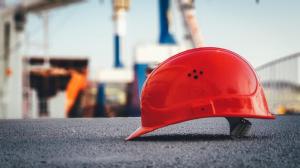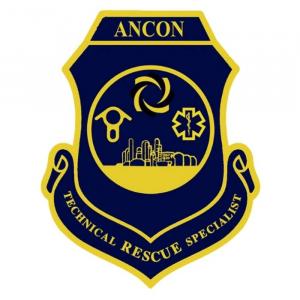The Most Dangerous Jobs in the US: What Are the Safety Options?
Every day, many professionals go to work, putting their lives at risk. What are the most dangerous jobs in the US? We have identified the top 25.
CARSON, CA, UNITED STATES, July 8, 2021 /EINPresswire.com/ -- What are the Most Dangerous Jobs in the US?Wondering what the most dangerous jobs in the US are? We will get to that in a bit. First, it is important to understand that regardless of the levels of risks involved, there are always ways to mitigate risks and provide a more secure environment for workers. For example, individuals working in the gas and mining industry can benefit from confined space rescue support. Similarly, safety watchers and regular inspections can ensure maximum safety for crane operators, cement masons, construction helpers, and several other workers across industries.
Here are the 25 most dangerous jobs in the USA.
1. Logging Workers - logging ranks first on the list of most dangerous jobs, with a fatality rate of 111 deaths per 100,000 workers.
2. Aircraft Pilots - With 53 deaths per 100,000 workers, the fatality rate is significantly high.
3. Derrick Operators - Derrick operators are employed across different industries, including oil, gas, and mining. Derrick workers may also be required to work in confined spaces that come with perils of their own. The on-job fatality rate is 46 deaths per 100,000 workers. Confined Space Rescue Support and EHS Services can make a big difference in this regard, ensuring safer working conditions.
4. Roofers - The fatal injury rate is about 41 deaths per 100,000 workers.
5. Garbage Collectors - The most common cause of fatal injuries in this profession is being struck by a garbage truck or other vehicles while on the job. The fatal injury rate is as high as 34 injuries per 100,000 workers.
6. Structural Iron & Steel Workers - The most common fatal accidents involve falling and slipping. The fatal injury rate is about 29 injuries per 100,000 workers. The on-job fatality rate can be reduced by incorporating the services of EHS professionals and attendant safety watchers.
7. Delivery Drivers - Road accidents are the leading cause of death for delivery drivers. The fatal injury rate is about 27 per 100,000 workers.
8. Farmers - Farming is not a simple job, and farmers, ranchers, and other agricultural managers are always at risk associated with transportation accidents.
9. Firefighting Supervisors - The most common causes of on-job deaths include traffic accidents, fires, and explosions.
10. Power Linemen - The fatal injury rate is 20 per 100,000 workers. The most common cause of death in this field is electrocution.
11. Agricultural Workers - The fatal injury rate is 20 per 100,000 workers, and the most common cause of injuries is attributed to transportation accidents.
12. Crossing Guards - The fatal injury rate for crossing guards is about 19 per 100,000 workers. The most common reason behind fatal injuries is road accidents.
13. Crane Operators - The fatal injury rate is considerably high at 19 per 100,000 workers. However, EHS services can be employed to ensure better safety and prevent fatal accidents at construction sites. It will not only reduce risks for crane operators but all individuals working at the construction site.
14. Construction Helpers - The fatal injury rate is found to be 18 per 100,000 workers. Once again, hiring experienced safety specialists can help avoid fatal incidents and save lives.
15. Landscaping Supervisor - The fatal injury rate is 18 per 100,000 workers.
16. Highway Maintenance Workers - The most common reason for on-job deaths in these workers is vehicular accidents that occur on the highway. The fatal injury rate is 18 per 100,000 workers.
17. Cement Masons - The fatal injury rate is 17 per 100,000 for these workers. Falls are the leading cause of fatality among cement masons. However, as cement masons often work at construction sites, they can benefit from the services of technical rescue support, EHS safety professionals, and safety watches.
18. Engine Mechanics - The most common cause of mortality for these technicians is transportation accidents, leading to a fatal injury rate of 8 per 100,000.
19. Supervisors of Mechanics - The fatal injury rate is 15 per 100,000 workers. The leading cause of fatal injuries is violence by other people or injuries due to animal attacks.
20. Heavy Vehicle Mechanics - Transportation accidents are the most common cause of mortality for these mechanics. Plus, on-site accidents can also lead to fatal injuries. The fatal injury rate for these workers is about 14 per 100,000. Like most other individuals performing duties near or at construction sites, heavy vehicle mechanics can also benefit from the services of EHS professionals and safety watchers.
21. Ground Maintenance Workers - The most common cause of mortality for groundskeepers is car accidents, which occur when they are traveling between job sites. The fatal injury rate is 14 per 100,000 workers.
22. Police Officers - There is no surprise that violence is the leading cause of fatality among police officers on the job. The fatal injury rate is 14 per 100,000.
23. Maintenance Workers - The most common cause of workplace death for maintenance workers is cited as contact with objects and equipment. The fatal injury rate is 14 per 100,000 workers.
24. Construction Workers - The most common cause of death in the United States is tripping and falling, and the fatal injury rate is 13 per 100,000. However, risks can be mitigated, and a safer working environment can be provided by hiring the services of technical rescue support, EHS professionals, and safety watches.
25. Mining Machine Operators - The most common reasons for fatal accidents include falls and contact with mining machinery. The fatal injury rate is about 11 per 100,000 workers.
The Bottom Line: EHS, Technical Field, & Safety Compliance Services Can Save Lives
EHS services can ensure compliance with safety rules and regulations to bring down related risks. Confined space rescue support can help save lives by providing immediate and effective escape plans and even medical aid in some cases. For all these reasons, companies and employers need to invest in these services to ensure a safe working environment.
Lance B
DCS Rescue
+1 5625953002
lanceb@anconservices.com
Visit us on social media:
Facebook
LinkedIn
Legal Disclaimer:
EIN Presswire provides this news content "as is" without warranty of any kind. We do not accept any responsibility or liability for the accuracy, content, images, videos, licenses, completeness, legality, or reliability of the information contained in this article. If you have any complaints or copyright issues related to this article, kindly contact the author above.


